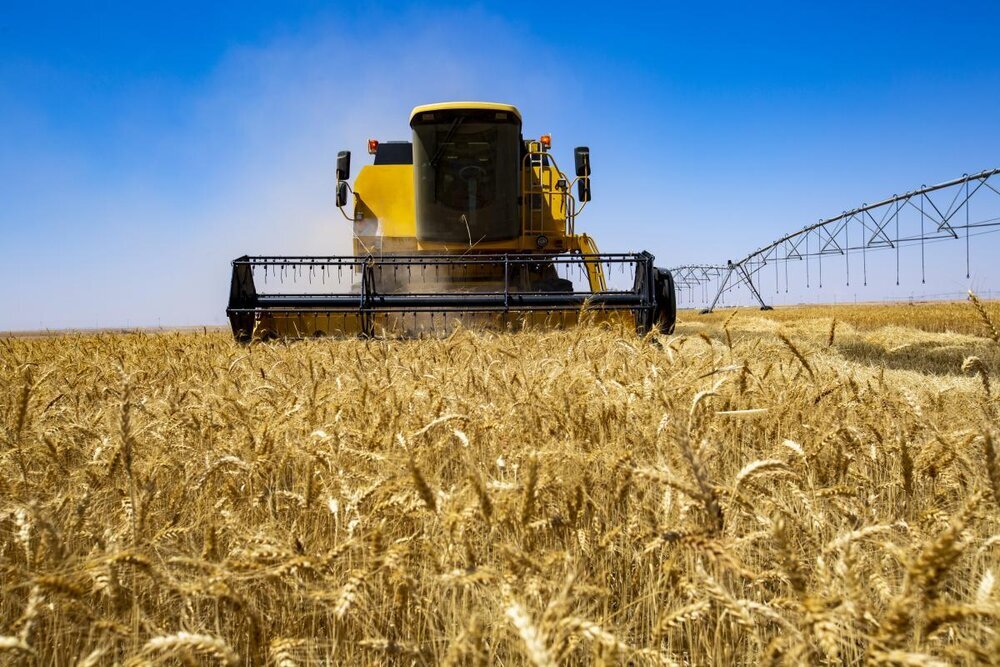FAO expects Iran’s grain output to further increase in 2024

TEHRAN - The United Nations Food and Agriculture Organization (FAO) has forecasted a further increase in Iran’s grain output this year amid efforts by the government in the country to rely more on domestic farming rather than imports for the basic needs of the country.
Figures cited in a Monday report from FAO’s Food Outlook, a biannual publication focusing on developments affecting global food and feed markets, showed that Iran’s grain output is expected to reach 20.1 million metric tons (mt) in 2024.
Iran was the 10th largest grain producer in Asia in 2023 with 19.8 million mt of output. The country relied on imports for 14.9 million mt of its grain needs.
The FAO report estimated that Iran’s wheat output will reach 13.5 million mt this year, flat on last year.
Rice output in the country is expected to increase by 18% to 2.6 million mt in 2024, the figures showed.
Iran has introduced policies to encourage increased agricultural output in the country to prevent any shortage of basic foods that can be caused by US sanctions targeting its foreign trade.
According to the FAO, Iran ranks third in terms of grain reserves among Asian countries. Only China and India have larger grain reserves than Iran. China’s reserves stand at 414 million mts, while India has 65 million mts. In the current year, Iran’s cereal reserves amount to 11.8 million mts. Of this, 8.8 million tons are wheat reserves.
Additionally, FAO predicts that Iran’s wheat production during the current agricultural year will reach 13.5 million mts. Iran is the fifth-largest producer of wheat in Asia, following China, India, Pakistan, and Turkey.
Also, the manager of the Agriculture Ministry’s Wheat Project said Iran’s wheat production is expected to reach 13.5 million tons in the current crop year (September 2023-2024).
According to Sohrab Sohrabi, the government purchased 10.4 million tons of wheat from farmers in the previous year, while the figure is expected to reach 10.5 million tons in the current year.
Putting the country’s annual need for wheat at 12 million tons, the official said considering the current trend of production, Iran will become self-sufficient in wheat production over the next few years.
Considered a staple in Iran, wheat is purchased every crop year by the government to build up its reserves and supply the market over time.
FAO said in a recent report that Iran produced more than 21 million tons of grain in the 2023 Crop Year to hold the fourth largest grain reserves in Asia.
In the report dubbed “Outlook of Food Products and Situation”, FAO put the total volume of grain produced in Iran in 2023 at 21.1 million tons, showing a more than two percent hike compared to a year earlier.
According to this report, Iran produced over 13 million tons of wheat in 2022 and 13.5 million tons in 2023.
FAO put Iran's total cereal stocks at 12.1 million tons in the previous year, noting that the stocks increased by 100,000 tons compared to the previous year.
Back in May 2023, FAO released a report in which Iran was ranked 43rd in the world in terms of food imports despite being the 17th most populous country in the world.
The UN entity’s statistics show that industrialized countries were the largest importers of food products in the world.
According to the organization, Iran currently stands among the world’s top producers of agricultural products.
China is ranked first in the world in terms of grain reserves with 399 million tons of grains, followed by India with 64 million tons of grain reserves and Turkey with 12.7 million tons respectively.
EF/
